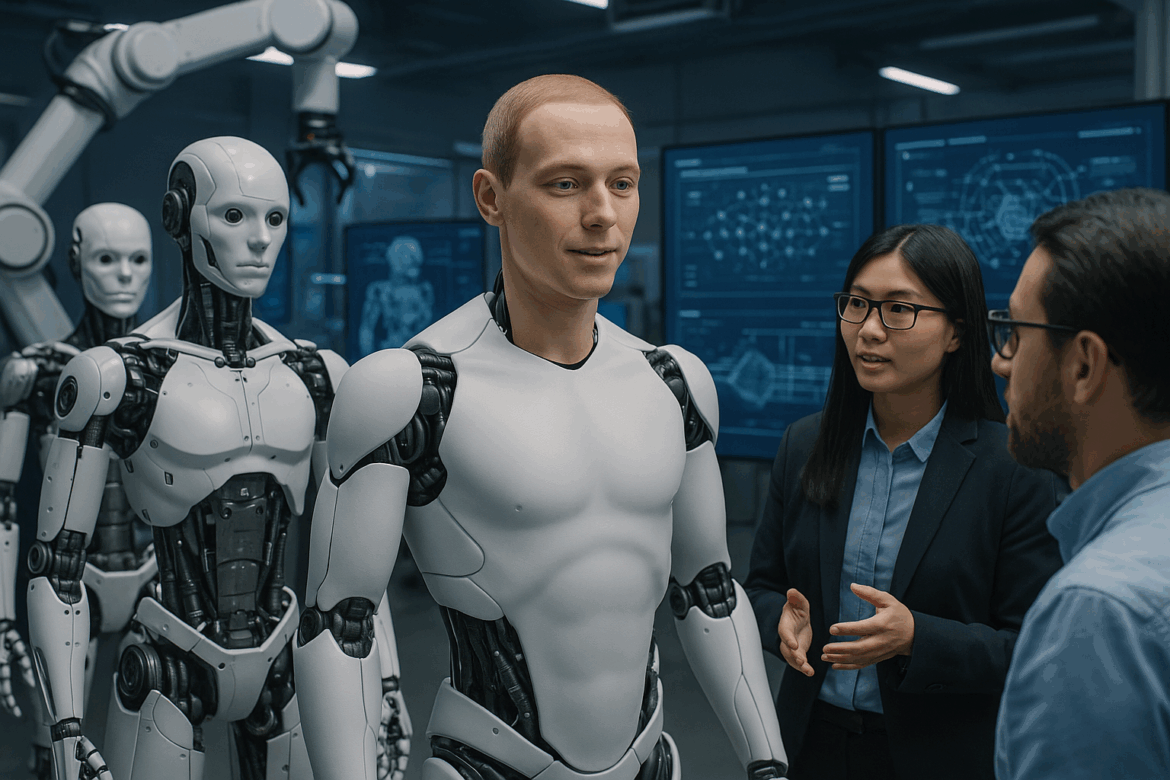Humanoid robots once confined to science fiction films, are now part of our reality. Engineers design these machines to mimic human appearance, movement, and thought processes. But how close are we to creating robots that can equal human intelligence and capabilities? Let’s dive into their evolution and potential future developments.
What Are Humanoid Robots?
Humanoid robots are machines designed to mirror the human form. This means they typically have a head, two arms, a body, and two legs. But it’s more than just looks — these robots are created to move, talk, and carry out tasks in ways we find natural. Some are made for study, others to help customers or even to be companions.
A Quick Look at Humanoid Robot History
People have dreamed about making machines that act like humans for hundreds of years. In the past, inventors built mechanical dolls that could move using gears and levers. But the real game-changers happened in the 1900s with robots like Honda’s ASIMO, which could walk, run, and talk to people. As time went on, tech got better at making these robots move, think, and pick up new skills.
How Artificial Intelligence Has Revolutionized Everything
AI brought about the biggest change in robotics. Because of AI humanoid robots these days can follow voice instructions, spot faces, and even pick up new skills from their experiences. They don’t stick to set rules — they can adjust to fresh situations. This lets robots tackle more intricate jobs such as helping shoppers in stores or lending a hand to older folks at home.
How We Use Humanoid Robots in Real Life Today
Humanoid robots aren’t just for research labs anymore — you can find them out in the world:
- Retail and customer support: Robots like Pepper say hello to customers and show them around.
- Healthcare: Robots help care for patients and provide therapy.
- Education: Some schools use robots to help teachers.
- Home assistants: Some robots pitch in with simple tasks at home.
They’re not flawless yet, but they’re becoming more intelligent and helpful.
Are We Close to Human-Level Robotics?
We’ve seen incredible advances, but we haven’t reached that point yet. Robots can walk, talk, and even learn — but they still can’t match human flexibility, emotions, and decision-making. For instance, robots often have trouble with:
- Walking on uneven ground
- Grasping complex feelings
- Engaging in deep talks or making ethical decisions
We’re getting closer, but human-like robots are still a work in progress.
Hurdles in Creating Human-Like Robots
Building a robot that acts just like a human is super hard. It needs many cutting-edge technologies to work together:
- Movement: Natural fluid motion is tough to achieve.
- Senses: Robots can’t experience or respond like we do.
- Thinking: Human thinking involves feelings, gut instincts, and life lessons.
Each of these areas is tricky on its own — and putting them all into one machine is a huge task.
What’s Next for Human-Like Robots?
The outlook for the future is bright. We can expect humanoid robots to:
- Get better at grasping human speech and emotions
- Become more adept in changing settings
- Prove more useful in houses medical centers, and community areas
As tech moves forward, these robots will start to feel more like partners — not just equipment.
